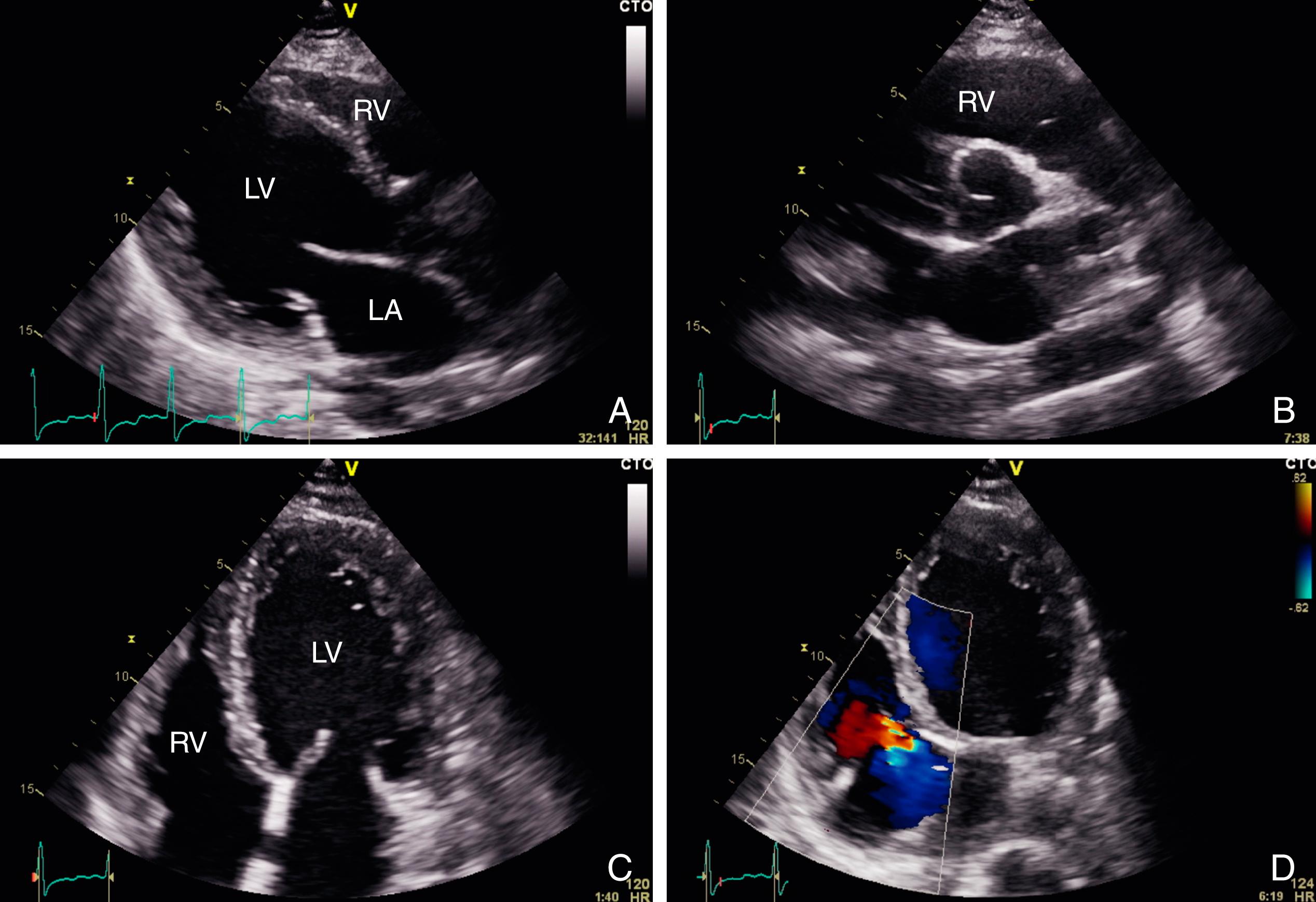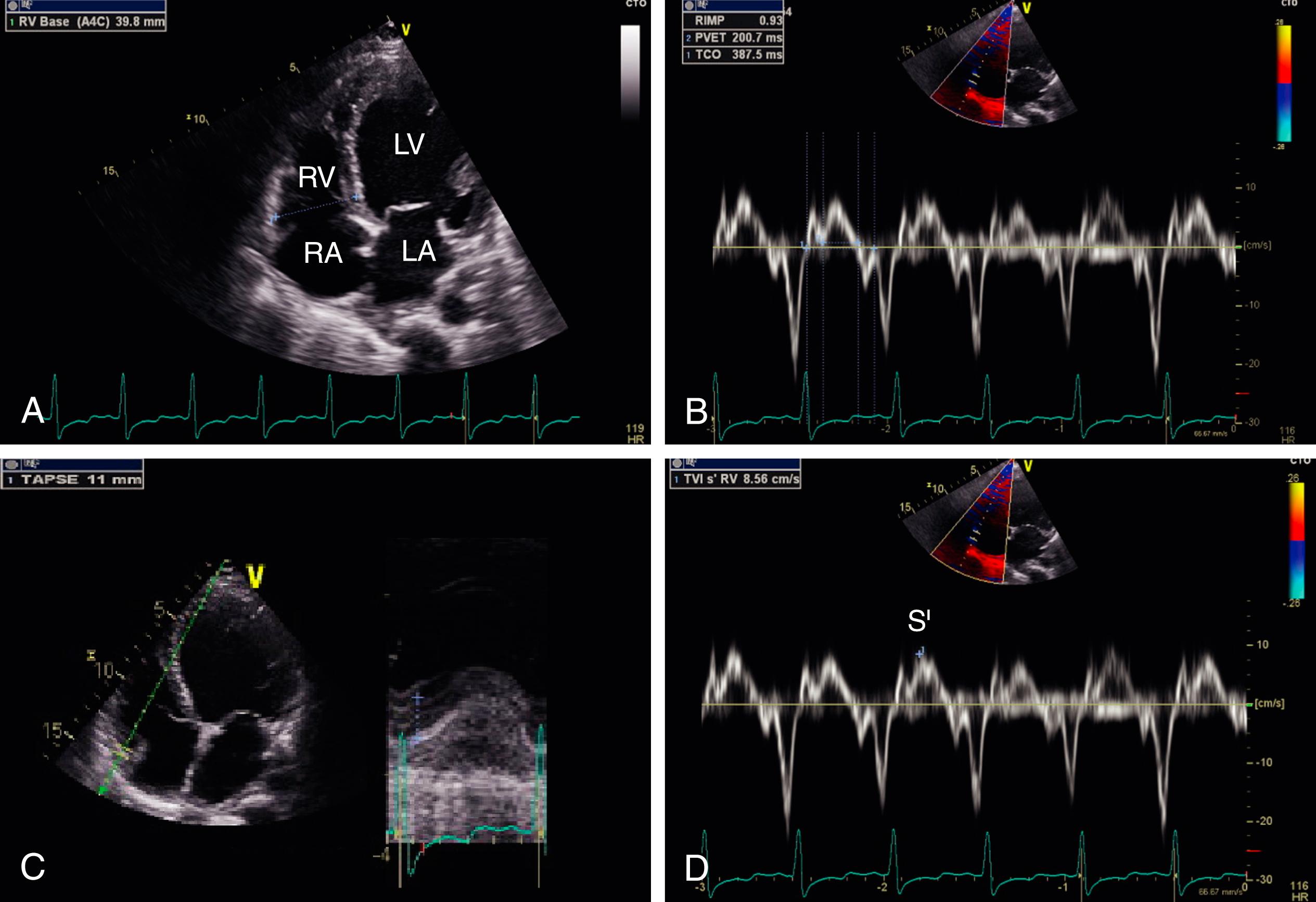Physical Address
304 North Cardinal St.
Dorchester Center, MA 02124
Dilated cardiomyopathy (DCM) encompasses a wide range of conditions in which the primary disorder is the enlargement of the ventricular chambers with normal left ventricular (LV) wall thickness, which ultimately leads to reduced LV contractile function and symptoms of heart failure. Both ischemic and nonischemic causes of DCM are discussed in this chapter.
Although the prevalence of right ventricular (RV) dysfunction in patients with idiopathic DCM is variable and has been reported in as many as 65% of patients, a recent cardiac magnetic resonance imaging (CMRI) study in a similar population found a prevalence of 34% using an RV ejection fraction (EF) cutoff of 45%. A study of a mixed ischemic and nonischemic heart failure population with New York Heart Association (NYHA) functional class II to III symptoms identified RV dysfunction in 51% of patients using multiple echocardiographic variables. Similarly, a study using gated-equilibrium radionuclide ventriculography found 52% of patients with RVEF 39% or less.
Impaired RV function carries substantial prognostic significance and predicts cardiovascular death and hospitalization in patients with reduced LV systolic function. It is also a predictor of impaired exercise tolerance and functional capacity, cardiac cachexia, low body weight, and renal dysfunction. ,
In advanced heart failure, RV dysfunction adds prognostic information beyond LVEF. Such prognostic information has been demonstrated, irrespective of the modality used to measure RV function and has been used in the outpatient setting, during hospitalization for acute decompensated heart failure, or in the context of patient referral to a specialized, advanced heart failure clinic.
The right ventricle is a crescent-shaped structure that wraps around the left ventricle. Although most LV contraction is circumferential, RV contraction is mainly longitudinal. Because the right ventricle and left ventricle are connected in series, they have the same stroke output; alterations in either ventricle affect the performance of the other. RV failure is a clinical syndrome caused by any cardiovascular disorder that impairs the ability of the right ventricle to fill or eject blood. It is recognized that left heart dysfunction is both the most common cause of RV dysfunction and the most common cause of pulmonary hypertension (PH). This has been termed group 2 PH according to the 6th World symposium on Pulmonary Hypertension and is defined as a mean pulmonary artery pressure (PAP) 20 mm Hg or greater and a pulmonary wedge pressure greater than 15 mm Hg. In patients with DCM or LV systolic dysfunction, RV systolic dysfunction, and ultimately, RV failure, results from several pathophysiologic mechanisms, including (1) intrinsic myocardial disease involving both ventricles; (2) increased RV afterload from increased pulmonary venous, and later, pulmonary arterial pressure, (3) increased RV preload from valvular regurgitation caused by RV dilation; and (4) reduced septal motion and ventricular interdependence.
In patients with idiopathic DCM, the primary myopathy is often the cause of the RV dysfunction. This observation is supported by the fact that there is a weak relationship between elevated PAP and RV dysfunction in DCM, but there is a substantially stronger relationship between these two factors in ischemic DCM. Furthermore, in idiopathic DCM, RV global longitudinal strain and regional peak myocardial RV strain are impaired compared with ischemic DCM.
Elevated LV filling pressures cause pulmonary venous hypertension that results in RV hypertrophy, a process that may increase RV diastolic dysfunction. Over time, these adaptations cannot overcome the chronic pressure overload and elevated wall stress, and the RV dilates and begins to fail. Initially, cardiac output is maintained through the Frank Starling mechanism, but progressive dilatation leads to decreased myocardial contraction, increased tricuspid regurgitation, and increased preload, which leads to a vicious cycle of RV dilatation, failure, and diminished cardiac output. Ventricular interdependence further explains the pathophysiological link between LV and RV dysfunction.
Evaluation of RV size and function includes the following: (1) visual estimation of RV size (it should be less than 2/3 of the LV in a standard apical four-chamber view) and systolic function in all views ( Fig. 68.1 and , , , ![]() ); (2) two-dimensional (2D) measurements in a RV-focused, apical four-chamber view; (3) global function assessment ( Fig. 68.2 ) using the right index of myocardial performance (RIMP), the rate of pressure rise in the ventricles (dP/dt), and the fractional area change (FAC); and (4) regional function assessment using tricuspid annular plane systolic excursion (TAPSE) and Doppler tricuspid lateral annular systolic velocity (S′). Other contemporary methods to assess RV systolic function include RVEF measurement by three-dimensional echocardiography and 2D strain, particularly of the RV free wall.
); (2) two-dimensional (2D) measurements in a RV-focused, apical four-chamber view; (3) global function assessment ( Fig. 68.2 ) using the right index of myocardial performance (RIMP), the rate of pressure rise in the ventricles (dP/dt), and the fractional area change (FAC); and (4) regional function assessment using tricuspid annular plane systolic excursion (TAPSE) and Doppler tricuspid lateral annular systolic velocity (S′). Other contemporary methods to assess RV systolic function include RVEF measurement by three-dimensional echocardiography and 2D strain, particularly of the RV free wall.


Video 68.1 Standard echocardiographic views in a patient with a nonischemic dilated cardiomyopathy and biventricular dysfunction. A, Parasternal long-axis view. B, Parasternal short-axis view. C, Apical four-chamber view. D, Apical four-chamber view demonstrating tricuspid regurgitation. LA, Left atrium; LV, left ventricle; RV, right ventricle.
Become a Clinical Tree membership for Full access and enjoy Unlimited articles
If you are a member. Log in here